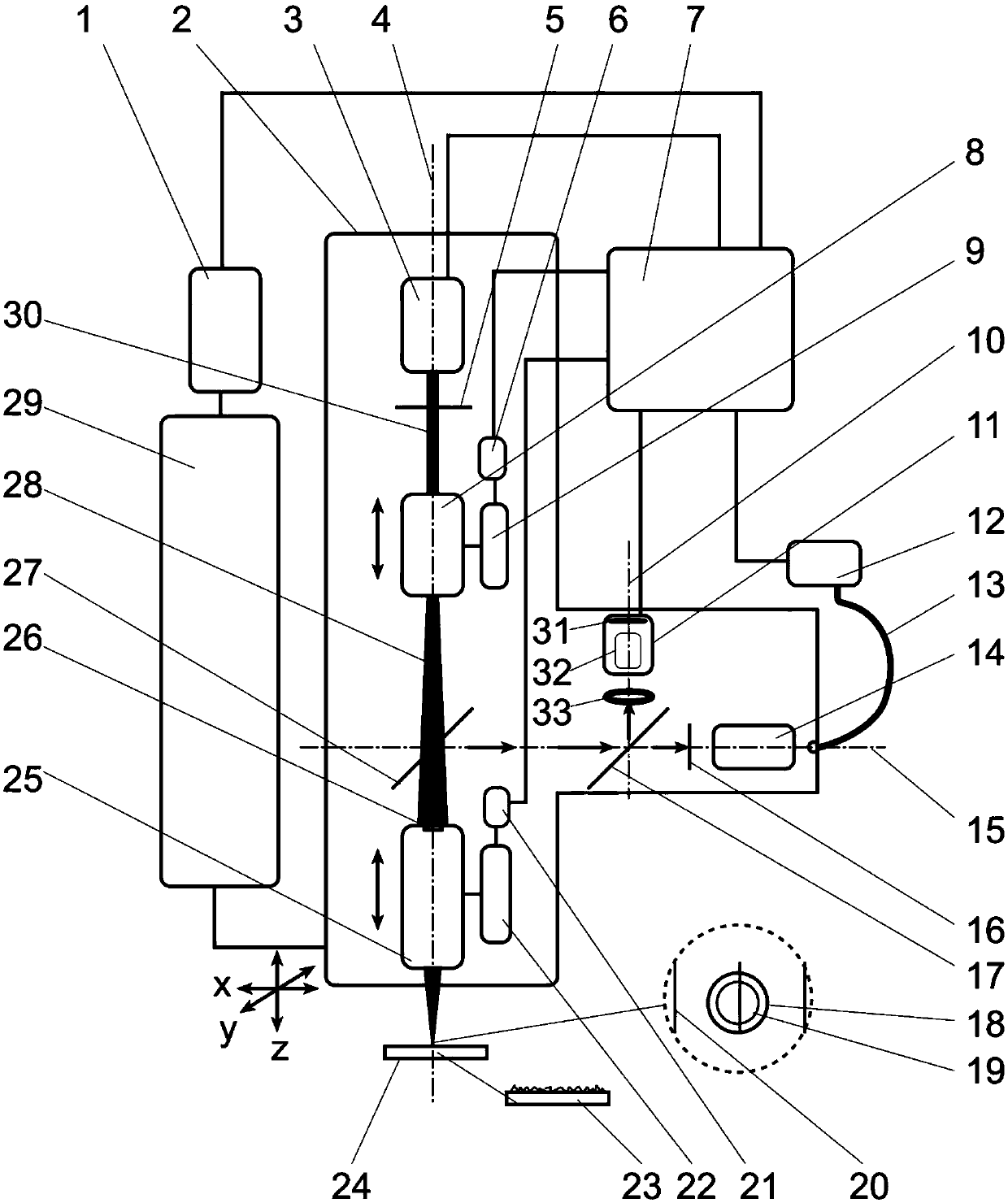Deep space exploration microdomain self-adaption raman fluorescence imaging combined system
A deep space detection and fluorescence imaging technology, applied in Raman scattering, fluorescence/phosphorescence, measurement devices, etc., can solve problems such as extremely high requirements for microscopic optical paths, the influence of scanning imaging speed, and the small particle size of the same mineral particles. Achieving the effect of high signal-to-noise ratio of Raman signal
- Summary
- Abstract
- Description
- Claims
- Application Information
AI Technical Summary
Problems solved by technology
Method used
Image
Examples
Embodiment Construction
[0035] The specific embodiment of the present invention is as figure 1 shown.
[0036] The adaptive Raman fluorescence imaging combined system proposed by the present invention is composed of a main controller 7, a spectrometer 12, an optical fiber 13, a three-dimensional motor driver 1, a three-dimensional precision electric platform 29 and an optical head 2;
[0037] The optical head 2 is composed of an ultraviolet Raman laser 3, an ultraviolet interference filter 5, a secondary motor driver 6, a secondary linear electric platform 9, a low-magnification ultraviolet microscope objective lens 8, a dichroic mirror 27, and a long working distance high-magnification ultraviolet display. Composition of micro objective lens 25, main motor driver 21, main linear electric platform 22, ultraviolet Rayleigh filter 16, proportional beam splitter 17, micro objective lens 14, tube lens 33 and electronic eyepiece 11; imaging lens 32 is arranged in the electronic eyepiece 11 and image sens...
PUM
 Login to View More
Login to View More Abstract
Description
Claims
Application Information
 Login to View More
Login to View More - R&D
- Intellectual Property
- Life Sciences
- Materials
- Tech Scout
- Unparalleled Data Quality
- Higher Quality Content
- 60% Fewer Hallucinations
Browse by: Latest US Patents, China's latest patents, Technical Efficacy Thesaurus, Application Domain, Technology Topic, Popular Technical Reports.
© 2025 PatSnap. All rights reserved.Legal|Privacy policy|Modern Slavery Act Transparency Statement|Sitemap|About US| Contact US: help@patsnap.com

